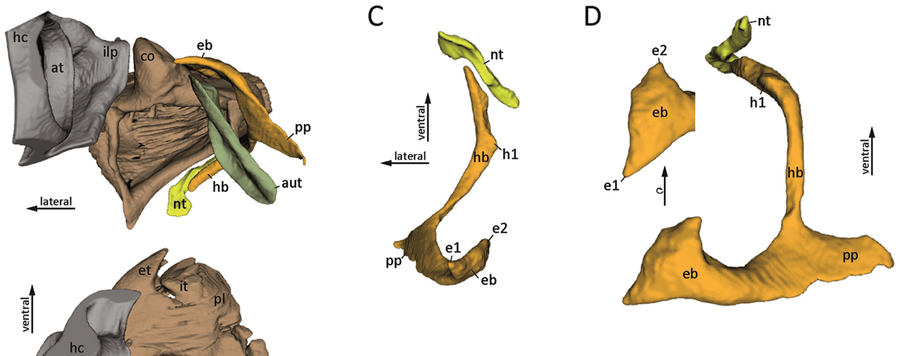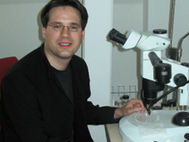
Comparative morphology of the tentorial complex in giant pill-millipedes
The presence of a swinging tentorium is a key apomorphy of Myriapoda, but this character has been studied in detail in only few species. Here the tentorium, i.e., the peristomatic skeleton of the preoral chamber, is comparatively studied in three species of the millipede order Sphaerotheriida Brandt, 1833. Since dissections of the fragile tentorial components proved to be difficult, despite the large head size, they were analysed mainly in situ via micro-computed tomography. Our results confirm previous observations of large differences in the tentorial construction in the giant pill-millipedes compared to chilognathan diplopods. The tentorium of Sphaerotheriida consists of a curved, plate-like epipharyngeal bar with distal projections, an elongate and thin hypopharyngeal bar, and a plate-like triangular posterior process; a transverse bar is absent. Only seven muscles attach at the tentorium in giant pill-millipedes, including two antennal muscles and two muscles of the gnathochilarium. Within the order Sphaerotheriida, the composition of the tentorium and its muscular equipment seems to be conserved, except for some variability in the shape of the epipharyngeal bar. As the transverse bar has been considered essential for the mobility of the tentorium in myriapods, its absence in Sphaerotheriida may indicate that their tentorium is not capable of performing a swing. Loss of tentorial mobility may also pertain to the order Glomerida Brandt, 1833, inferred here from the absence of a posterior process. An apparently immobile tentorium in Glomerida and Sphaerotheriida can straightforwardly be correlated with transformations of the head related to their ability of volvation. The different transformations of the tentorium, here hypothesised to cause immobility, may support current assumptions that the ability of volvation evolved convergently in Glomerida and Sphaerotheriida. This conclusion, however, still requires more detailed studies of the head anatomy in Glomerida and Glomeridesmida Cook, 1895.






